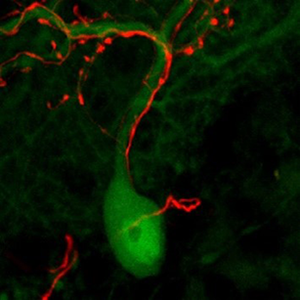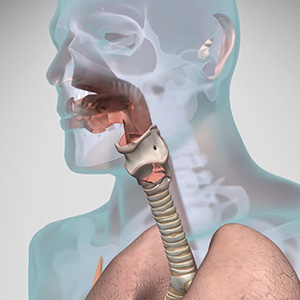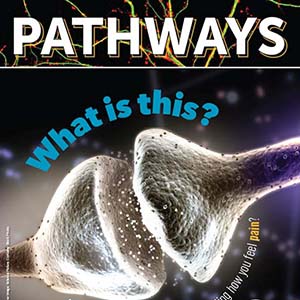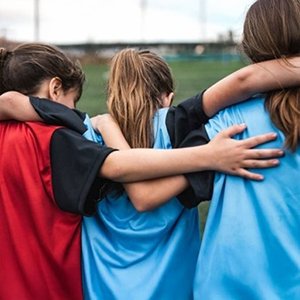
BiblioTech CityHacks: In Search of Sleep
How much sleep should you get? What happens when you're sleeping? What happens if you don't get enough sleep? In this interactive reading experience about sleep, circadian rhythms, and health, students help a young girl answer these questions so she can convince her mom to let her stay up late for CityHacks, a cool coding club that she wants to join.
See other sleep curriculum from The Partnership in Education.
Grades: 4-6
Produced by: The Partnership in Education, Duquesne University (SEPA funded)

Biology of Human
Biology of Human helps students and the public better understand advances in biomedical research relating to human biology. This program seeks to increase awareness of and interest in new biomedical research developments, and their importance to people's health and communities. Resources include comic books, activities, lessons, and other curricula with accompanying teaching guides, videos, and additional learning materials.
Grades: Middle and high school
Produced by: University of Nebraska, Lincoln (SEPA funded)

Biomedical Beat Educator's Corner: Genetics Miniseries
This Biomedical Beat miniseries explores the field of genetics—from how people inherit genes to how researchers study them. Students learn about different parts of genetics by reading the blog posts and discussing, applying, and quizzing what they learn through the activities outlined in the Educator’s Corner.
Grades: High school
Produced by: National Institute of General Medical Sciences

Biomedical Beat Educator's Corner: Immunology Miniseries
This Biomedical Beat miniseries explores the immune system, which protects the body from microbes that could cause infection. Students learn about different areas of immunology by reading the blog posts and discussing, applying, and quizzing what they learn through the activities outlined in the Educator’s Corner.
Grades: High school
Produced by: National Institute of General Medical Sciences

BrainU: Neuroscience Resources
Students learn neuroscience concepts with materials that include lesson plans, handouts, activities, and videos. Lesson support and other teacher resources are also provided.
Grades: Elementary through high school
Produced by: University of Minnesota Twin Cities (SEPA funded)

Cannabis: The Facts You Need to Know
This curriculum informs students about cannabis, including an explanation of CBD (cannabidiol) and the short- and long-term health effects of cannabis use, such as memory problems and addiction. Materials include a student article, lesson plan, teacher’s guide, and interactive.
Grades: 6-12
Produced by: National Institute on Drug Abuse and Scholastic, Inc.

Dangerous Decibels Educator Resource Guide
This guide provides background information, hands-on activities, and experiments that educators can use to teach students about noise-induced hearing loss (NIHL) and tinnitus (ringing in the ear). Activities cover the anatomy and physiology of the ear and the mechanics of hearing, the physics of sound, and ways to prevent NIHL.
Grades: Elementary through high school
Produced by: Oregon Museum of Science and Industry (SEPA funded)

Dermis Defense Game
Players of this interactive follow a typical teen named Benji to help him beat his acne breakouts and learn about the immune system. Features include colorful, comic-style storytelling; scientific content about the immune system and its functions; challenging and fun gameplay; and links to supplementary reading materials about the immune system.
Grades: Middle and high school
Produced by: The Partnership in Education, Duquesne University (SEPA funded)

DIY Human Body
Families and educators investigate and learn about the human body at home, at school, or anywhere with 13 easy-to-use, hands-on activities, plus videos and more. This resource is from the Lawrence Hall of Science project and is available in English and Spanish.
Grades: Elementary and middle school
Produced by: University of California, Berkeley, Lawrence Hall of Science, in partnership with University of California, San Francisco, Benioff Children’s Hospital (SEPA funded)

Dr. Allevable’s Lab
This mobile app for iOS and Android devices provides games that explore topics related to regenerative medicine. Students become super scientists who learn about topics such as stem cells, growth factors, and regenerative medicine technologies.
Students can also check out Dr. Allevable's laboratory and meet her friend Regenerobot in animated videos.
Grades: 5-9
Produced by: The Partnership in Education, Duquesne University (SEPA funded)

Genome: Unlocking Life's Code
This website focuses on genomics and its impact on people’s lives. It provides a resource library useful to students and educators containing lesson plans, interactives, animations, student-written articles, and more. This website was developed to support the Genome: Unlocking Life’s Code exhibition, a collaboration between the National Human Genome Research Institute and the Smithsonian National Museum of Natural History.
Grades: 9-12
Produced by: National Human Genome Research Institute

How Does the Human Body Produce Voice and Speech?
How do we produce voice and speech? This animated video explains the processes of breathing, voicing, and speaking. It shows the sequential movements within the body that allow us to create voice and speech, starting with breathing.
Grades: 9-12
Produced by: National Institute on Deafness and Other Communication Disorders

How We Grow
Students learn about how different living things grow and develop through the story of a student who has to write an essay for his science class. The essay is on growth and development, but he just doesn’t understand what’s interesting about how we grow. That is, until his room starts to come to life.
See other cell and growth curriculum from The Partnership in Education.
Grades: 5-8
Produced by: The Partnership in Education, Duquesne University (SEPA funded)

Journey of Smell to the Brain
Have you ever wondered how smells get from their source all the way to your brain? Your sense of smell does more than just let you enjoy different aromas, and a loss in this ability can impact your quality of life. This animated video shows students how smells travel to the brain and explains their importance in daily life, like alerting people to dangers such as a gas leak, spoiled food, or a fire. The video also explores reasons for changes in a person’s sense of smell.
Grades: 6-12
Produced by: 42 Degrees North Media for the National Institute on Deafness and Other Communication Disorders

Monster Heart Medic
In this educational adventure from the Lawrence Hall of Science project, students explore the cardiovascular system and how healthy living affects it. They help diagnose a friendly, three-eyed monster and assist him on his path to a healthier life. Available in English and Spanish.
Grades: Elementary and middle school
Produced by: University of California, Berkeley, Lawrence Hall of Science, in partnership with University of California, San Francisco, Benioff Children’s Hospital (SEPA funded)

NEI for Kids
This web portal teaches kids about how their eyes work and how to keep them healthy, plus lots of fun eye facts.
Grades: Elementary through high school
Produced by: National Eye Institute (NEI)

Our Cells, Our Selves
Travel along on a richly animated, dreamy bedtime story and explore the wonders of the immune system through the eyes of a 7-year-old who has just been diagnosed with type 1 juvenile diabetes. See other immune system curriculum from The Partnership in Education.
Grades: 5-8
Produced by: The Partnership in Education, Duquesne University (SEPA funded)

Pathways: Circadian Rhythms
The circadian rhythms unit of Pathways introduces students to circadian rhythms, the “schedules” our bodies follow over the course of a day. These rhythms influence processes like hunger and the sleep-wake cycle. Pathways provides a collection of free educational resources about basic biomedical science and research careers. Be sure to check out the Kahoot! quiz.
Grades: Middle and high school
Produced by: National Institute of General Medical Sciences and Scholastic, Inc.

Pathways: The Brain and Anesthesia
The brain and anesthesia unit of Pathways teaches students about how scientists research the mysteries of pain. It also describes the function of anesthesia on the brain and features some anesthesiologists who study pain. Pathways provides a collection of free educational resources about basic biomedical science and research careers. Be sure to check out the Kahoot! quiz.
Grades: Middle and high school
Produced by: National Institute of General Medical Sciences and Scholastic, Inc.

Resources from the University of Washington Genome Sciences Education Outreach
The University of Washington Genome Sciences Education Outreach (UWGSEO) provides various hands-on education resources. Its science curriculum on type 2 diabetes is available for high school students in biology, health, and family and consumer science classes. In the Blood Sugar Balance web game, players keep blood sugar levels within range through their food choices and exercise decisions, while regulating insulin and glucagon levels in the body. UWGSEO has also created curriculum that focuses on how food choices and the environment affect the human gut microbiome, as well as lessons on what students can learn from how the nematode C. elegans maintains balance in a changing environment.
Grades: High school
Produced by: University of Washington Genome Sciences Education Outreach (SEPA funded)

The Human Body: Bones, Joints, Muscles, and Skin
These online resources explore bones, joints, muscles, and skin, including what happens when they get hurt and how to keep them healthy. Intended for students in grades 4 through 6 who are learning about the human body, these educational materials include web content, fun and interactive Kahoot! quizzes, and suggestions for hands-on activities. Teachers may also use this information, which is mapped to national science education standards, to inform lesson plans.
Grades: 4-6
Produced by: National Institute of Arthritis and Musculoskeletal and Skin Diseases

The Partnership in Education: Materials and Resources
The Partnership in Education is a program that creates innovative, hands-on educational products that make science engaging and fun for teachers, students, and learners of all ages. Topics range from the scientific method and evolution to the science of sleep and regenerative medicine. Materials and resources include videos, games, student readings, and curriculum.
Grades: Elementary through high school
Produced by: Duquesne University (SEPA funded)

TSCORE-LIFT KS
Teachers and Students for Community-Oriented Research and Education: Linking industry Partners, Faculty, and Teachers (TSCORE-LIFT) offers teacher-developed units to provide students with learning experiences that grow their interest and knowledge in the health sciences. Subject areas include the general structure and function of the human body, management processes within health care settings, and diversity in health care.
Grades: High school
Produced by: University of Kansas Medical Center (SEPA funded)


